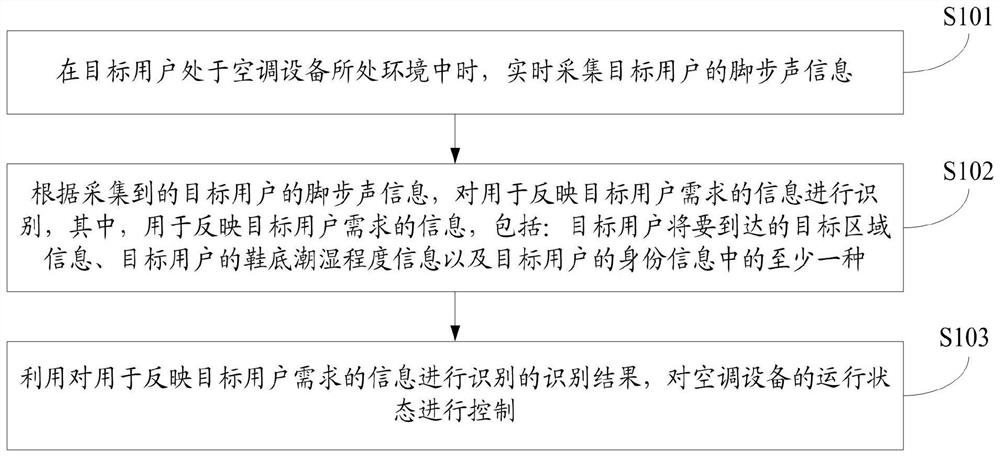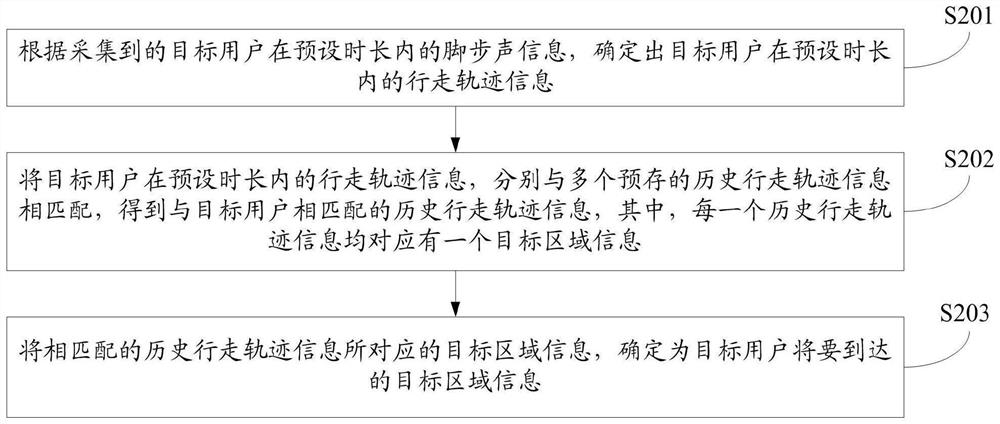Control method and device of air conditioning equipment, storage medium and electronic equipment
A technology of air conditioning equipment and a control method, which is applied in the directions of space heating and ventilation control input, control input involving users/components, mechanical equipment, etc. Improve experience, meet needs, and reduce the effect of control operations
- Summary
- Abstract
- Description
- Claims
- Application Information
AI Technical Summary
Problems solved by technology
Method used
Image
Examples
Embodiment approach
[0082] Specifically, see image 3 , in a specific embodiment of the present application, an implementation of step S201 includes:
[0083] S301. According to the collected footstep information of the target user within the preset time period, identify the position information of the target user at each time point within the preset time period.
[0084] For each time point within the preset duration, the collected footstep information of the target user at that time point can be used as the location information of the target user at that time point. Furthermore, the location information of the target user at each time point within the preset duration can be obtained. The location information can specifically be location coordinate information, or information that can describe the current location of the target user, such as the sound source direction of the footsteps and the distance information from the voice sensor.
[0085] Optionally, in a specific embodiment of the prese...
PUM
 Login to View More
Login to View More Abstract
Description
Claims
Application Information
 Login to View More
Login to View More - R&D
- Intellectual Property
- Life Sciences
- Materials
- Tech Scout
- Unparalleled Data Quality
- Higher Quality Content
- 60% Fewer Hallucinations
Browse by: Latest US Patents, China's latest patents, Technical Efficacy Thesaurus, Application Domain, Technology Topic, Popular Technical Reports.
© 2025 PatSnap. All rights reserved.Legal|Privacy policy|Modern Slavery Act Transparency Statement|Sitemap|About US| Contact US: help@patsnap.com



